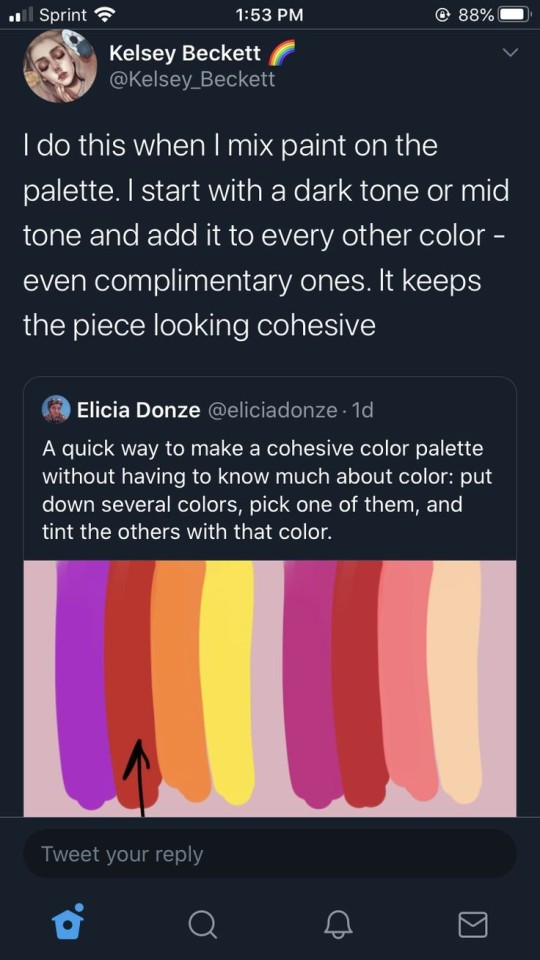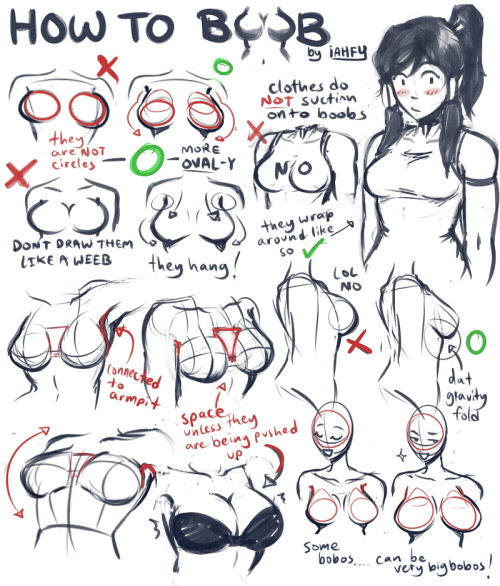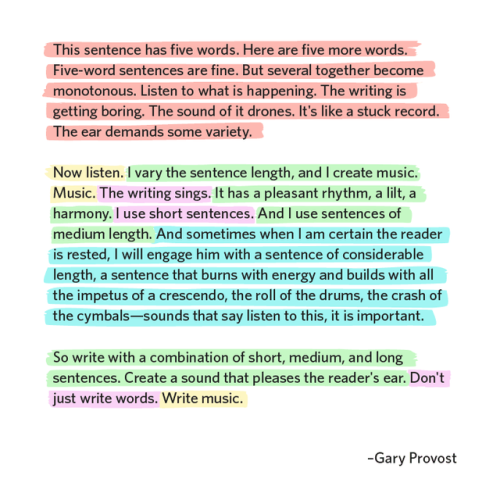I Need Everyone’s Best Character Advice. STAT.
I need everyone’s best character advice. STAT.
More Posts from M3a7gr1nd3r and Others
DEAR ARTISTS, PLEASE READ THIS POST I STUMBLED ACROSS

IF YOU ARE NOT DOING THIS ALREADY, YOU SHOULD TRY IT

I even tested it out myself, it works great
Some of my favorite words and phrases to describe a character in pain
coiling (up in a ball, in on themselves, against something, etc)
panting (there’s a slew of adjectives you can put after this, my favorites are shakily, weakly, etc)
keeling over (synonyms are words like collapsing, which is equally as good but overused in media)
trembling/shivering (additional adjectives could be violently, uncontrollably, etc)
sobbing (weeping is a synonym but i’ve never liked that word. also love using sob by itself, as a noun, like “he let out a quiet sob”)
whimpering (love hitting the wips with this word when a character is weak, especially when the pain is subsiding. also love using it for nightmares/attacks and things like that)
clinging (to someone or something, maybe even to themselves or their own clothes)
writhing/thrashing (maybe someone’s holding them down, or maybe they’re in bed alone)
crying (not actual tears. cry as in a shrill, sudden shout)
dazed (usually after the pain has subsided, or when adrenaline is still flowing)
wincing (probably overused but i love this word. synonym could be grimacing)
doubling-over (kinda close to keeling over but they don’t actually hit the ground, just kinda fold in on themselves)
heaving (i like to use it for describing the way someone’s breathing, ex. “heaving breaths” but can also be used for the nasty stuff like dry heaving or vomiting)
gasping/sucking/drawing in a breath (or any other words and phrases that mean a sharp intake of breath, that shite is gold)
murmuring/muttering/whispering (or other quiet forms of speaking after enduring intense pain)
hiccuping/spluttering/sniffling (words that generally imply crying without saying crying. the word crying is used so much it kinda loses its appeal, that’s why i like to mix other words like these in)
stuttering (or other general terms that show an impaired ability to speak — when someone’s in intense pain, it gets hard to talk)
staggering/stumbling (there is a difference between pain that makes you not want to stand, and pain that makes it impossible to stand. explore that!)
recoiling/shrinking away (from either the threat or someone trying to help)
pleading/begging (again, to the threat, someone trying to help, or just begging the pain to stop)
Feel free to add your favorites or most used in the comments/reblogs!
btw, everybody who wants to learn/get better at drawing anatomy, the best advice i have for you is to grab the morpho simplified forms book/pdf, sit down, and draw every single drawing thats in the book. or at least thats what i did and it worked really well.
its a lot and it might look like shit at first and it might be difficult and frustrating, god knows it was for me, but it turned out to be enormously helpful at the end. i got significantly better at drawing figures and faces, and whats more important, is that i actually know and understand the fundamentals, the basic shapes and structures and i can apply them moving forward
you just wanna understand the basic things and how they work etc etc. the improvement will come after you draw a fuckton of these. like here, this is 2022 february vs july, its not a Huge difference, but you can see how later i knew what i was doing as opposed to earlier where i was just trying my very best to copy what i saw on the screen




(the hands especially were a nightmare to get through first, but it was worth it. dont be discouraged if something doesnt look the way you want it to, you will get there!)
Hey GMs, when your players beat a legendary monster start spreading rumors about them. Just for fun. Try it.
One of them deals the finishing blow to a mercenary warlord intent on ravaging a countryside and burning villages to the ground. The people in that area start calling them "the peacemaker". They don't even know the character's name. Just the legend. The story that some stranger risked their life for no apparent reason and brought peace to the land.
Another player beheads a mind flayer that had been hiding in plain sight in the city. They earn the nickname "octopus". The name becomes feared in the criminal underbelly of the city as someone that feels no fear, sees through all enchantments, and strikes without warning.
One player character outsmarts a vampire, knowing they stood no chance in overpowering it. The vampire is good on its word upon losing their game of wits and absconds to more obscure realms, though the character knows their for us far from done. Nonetheless, the character earns the nickname "the bloodless", a figure the vampire could not consume. It carries the impression of a cold and calculating personality, one people are not eager to cross.
tips for setting the scene
it’s easy to get caught up in dialogue or a character’s internal dialogue and forget altogether that they, too, exist in their own physical world. as authors, it’s primarily our job to convey the exact amount of information: the reader is on a need to know basis, but they also need to know enough to draw their own conclusions. i’ll admit, it’s a difficult task, but here are some tips to help set a scene:
- imagine the world from the eyes of your character: how do they see things? do they see the big picture first or are they drawn to smaller details that others don’t often notice? what’s pulling their attention away from the action or their own thoughts?
- breathe life into your scenes: i don’t mean the english teacher’s equivalent of “the curtains were blue means that the character is sad.” i’m talking about the blue filter in Twilight that conveys the “constant cover of clouds and rain” and the shift from the Arizona desert to the cool Pacific Northwest. think about all the small details that convey information about a scene and allow the readers to make inferences. if the character walks along a street and the yards shift from overgrown hedges with frayed yard chairs and a birdbath containing a mini swamp to yards with freshly cut grass with white picket fences and ornate wreathes hanging on the doors, you’re providing all of the details for readers to make an inference. context is needed, too, but that will be provided in the whole of your novel or short story. don’t be afraid to provide details and use figurative language.
- spread out your details: did you feel bombarded in the last tip? i provided a lot of details quickly, all at once, without spreading them between action, dialogue, or internal dialogue. i’m not going to stop you from being the next J.R.R. Tolkien if that’s how you like to write, but try not to overwhelm the reader with details all at once. it will feel more natural if you spread things out and allow the reader to feel as if they, too, are with the character in their environment. this is more of a stylistic tip, so take it with a grain of salt and think about what will work best for your novel. always go back to that and to what your character is seeing. how is this all playing out for them? how can you put feeling into the scene?
- place your characters within the scene: where are they in their environment? how are they interacting with the people or objects in it? what do they think about these things? you don’t need to tell the reader everything your character does, but provide enough information so that we don’t get lost in their movement or stagnation. it helps to have someone else read your work if you’re struggling with this part. if they’re lost as to where the character is or what they’re doing, chances are a good portion of your readers will be confused, too. check out your prepositions. are there too many? too few? use them, but don’t abuse them.
happy writing! if you need help setting a scene or have any questions, our ask box is always open!
art cheats
hello i am here today to not lose track of the art cheats i have discovered over the years. what i call art cheat is actually a cool filter/coloring style/way to shade/etc. that singlehandedly makes art like 20 times better
80’s anime style
glitch effect
glow effects
adding colors to grayscale paintings
foreshortening ( coil )
foreshortening ( perspective )
clipping group (lines)
clipping group (colors)
dramatic lighting ( GOOD )
shading metal
lighting faces
that is all for today, do stay tuned as i am always hunting for cool shit like this
Hi there! Could you do a clothes folds tutorial please?
there are probably more qualified people than me but the long and short of it is 1. understanding what fabric you want to draw and 2. where the points of stress on the figure are
let’s say you have a nakey man who probably got into sniper’s drug stash:

quite unbecoming
let’s put some trousers on him, shall we?

so you see how folds radiate from the point of stress, yes?
it’s important to note that thicker fabric tends to fold less than thinner fabric

and now you have a very scared, clothed lad

of course, it’s always best to work from reference so setting up a friend to draw or taking a selfie is always helpful
-
 scrolljinreinbachii liked this · 6 days ago
scrolljinreinbachii liked this · 6 days ago -
 53miner53 reblogged this · 2 weeks ago
53miner53 reblogged this · 2 weeks ago -
 53miner53 liked this · 2 weeks ago
53miner53 liked this · 2 weeks ago -
 draanden liked this · 2 weeks ago
draanden liked this · 2 weeks ago -
 lumininox liked this · 2 weeks ago
lumininox liked this · 2 weeks ago -
 unionizecatgirls liked this · 2 weeks ago
unionizecatgirls liked this · 2 weeks ago -
 thefeistiestworm reblogged this · 2 weeks ago
thefeistiestworm reblogged this · 2 weeks ago -
 fangpoint liked this · 2 weeks ago
fangpoint liked this · 2 weeks ago -
 littlemeowmeowmaeve reblogged this · 2 weeks ago
littlemeowmeowmaeve reblogged this · 2 weeks ago -
 littlemeowmeowmaeve liked this · 2 weeks ago
littlemeowmeowmaeve liked this · 2 weeks ago -
 merridelicious reblogged this · 2 weeks ago
merridelicious reblogged this · 2 weeks ago -
 barabansetbabets liked this · 3 weeks ago
barabansetbabets liked this · 3 weeks ago -
 sillycollectionartisan liked this · 3 weeks ago
sillycollectionartisan liked this · 3 weeks ago -
 toddtheodd21 liked this · 4 weeks ago
toddtheodd21 liked this · 4 weeks ago -
 sorceressoftheoceanandstars reblogged this · 1 month ago
sorceressoftheoceanandstars reblogged this · 1 month ago -
 sorceressoftheoceanandstars liked this · 1 month ago
sorceressoftheoceanandstars liked this · 1 month ago -
 yozora-wo-kakeru liked this · 1 month ago
yozora-wo-kakeru liked this · 1 month ago -
 meance-in-theory liked this · 1 month ago
meance-in-theory liked this · 1 month ago -
 dualscepters liked this · 1 month ago
dualscepters liked this · 1 month ago -
 punkcat liked this · 1 month ago
punkcat liked this · 1 month ago -
 asterismposting reblogged this · 1 month ago
asterismposting reblogged this · 1 month ago -
 ketchup-for-bad-days liked this · 1 month ago
ketchup-for-bad-days liked this · 1 month ago -
 ghoulish-activist-gay liked this · 1 month ago
ghoulish-activist-gay liked this · 1 month ago -
 sunn-mechanic reblogged this · 1 month ago
sunn-mechanic reblogged this · 1 month ago -
 kalgalen liked this · 1 month ago
kalgalen liked this · 1 month ago -
 orichalga liked this · 1 month ago
orichalga liked this · 1 month ago -
 cerebrobullet liked this · 1 month ago
cerebrobullet liked this · 1 month ago -
 countthelions reblogged this · 1 month ago
countthelions reblogged this · 1 month ago -
 feminist-hoeblr liked this · 1 month ago
feminist-hoeblr liked this · 1 month ago -
 verosario liked this · 1 month ago
verosario liked this · 1 month ago -
 stoupax liked this · 1 month ago
stoupax liked this · 1 month ago -
 fokron reblogged this · 1 month ago
fokron reblogged this · 1 month ago -
 thewanderingheathen reblogged this · 1 month ago
thewanderingheathen reblogged this · 1 month ago -
 thewanderingheathen liked this · 1 month ago
thewanderingheathen liked this · 1 month ago -
 fokron liked this · 1 month ago
fokron liked this · 1 month ago -
 mapeslyrup reblogged this · 1 month ago
mapeslyrup reblogged this · 1 month ago -
 mapeslyrup liked this · 1 month ago
mapeslyrup liked this · 1 month ago -
 proudmarykeeponlearning liked this · 1 month ago
proudmarykeeponlearning liked this · 1 month ago -
 aej3145 reblogged this · 1 month ago
aej3145 reblogged this · 1 month ago -
 thegalaxysedge22 liked this · 1 month ago
thegalaxysedge22 liked this · 1 month ago -
 mkglacier reblogged this · 1 month ago
mkglacier reblogged this · 1 month ago -
 grimboigio liked this · 1 month ago
grimboigio liked this · 1 month ago -
 your-icarian-carrion liked this · 1 month ago
your-icarian-carrion liked this · 1 month ago -
 realbeefman liked this · 1 month ago
realbeefman liked this · 1 month ago -
 crowsolan liked this · 1 month ago
crowsolan liked this · 1 month ago -
 artistic-pussy-power reblogged this · 1 month ago
artistic-pussy-power reblogged this · 1 month ago -
 infidelity-bitch liked this · 1 month ago
infidelity-bitch liked this · 1 month ago







